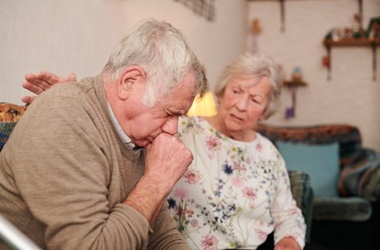An updated summary of current guidance: most infections are spread through close contact
PLEASE NOTE: THIS IS NO LONGER RELEVANT AND IS NOT BEING UPDATED BUT HAS BEEN LEFT ON THE SITE FOR REFERENCE PURPOSES ONLY
This information is sourced from from PHE, PHS, the UK Research and Innovation (UKRI), Nature, Clinical Infectious Diseases, the BMJ Analysis and BMJ Clinical Update, the WHO, the CDC and the Lancet:
Respiratory viruses are transmitted in multiple ways:
- Contact transmission is infection spread through direct contact with an infectious person or with a contaminated article/surface
- Droplet transmission is infection spread through exposure to virus-containing respiratory droplets, generally within 2 metres
- Close contact refers to transmission that can happen by either contact or droplet transmission while a person is within 2 metres of an infected person
- Airborne transmission is infection spread through exposure to smaller droplets and particles that can remain suspended in the air over long distances (usually greater than 2 metres) and time (typically hours)
Evidence on the mechanisms of transmission of SARS-CoV-2:
- There is growing scientific consensus that the dominant method of spread for Covid-19 is airborne transmission This has been summarised in a recently published Lancet Editorial
- SARS-CoV-2 may travel more than 2 m through activities such as coughing and shouting
- The mechanism of transmission of novel variants is no different to those for SARS-CoV-2 generally
Current official guidance on routes of transmission:
PHE states SARS-CoV-2 is primarily transmitted through respiratory (droplet and aerosol) and contact routes. Transmission risk is highest where people are in close proximity (within 2 metres). Airborne transmission can occur in health and care settings in which procedures that generate aerosols are performed. Airborne transmission may also occur in poorly ventilated indoor spaces over an extended period of time
WHO state that the main way the virus spreads is by respiratory droplets among people who are in close contact with each other but that aerosol transmission can occur in specific settings, particularly in indoor, crowded and inadequately ventilated spaces, where infected person(s) spend long periods of time with others
CDC guidance states: Covid-19 is thought to spread mainly through close contact from person to person, including between people who are physically near each other (within about 2 metres)
Evidence on the peak risk periods for transmission
- Symptomatic and pre-symptomatic transmission (1-2 days before symptom onset), is likely to play a greater role in the spread of infection than asymptomatic transmission
- Covid-19 continues to be detected in people for 7–20 days after they develop initial symptoms, and sometimes for more than one month. However tests may be over sensitive and detect genetic material of dead viruses, so it does not mean that someone continues to be infectious for this length of time
- Scientists have only been able to grow the virus in the lab from samples taken less than ten days after symptoms started which strongly suggests that infectiousness is significantly reduced after this point
- This is why people who develop Covid-19 are required to stay at home for 10 days from the start of symptoms
- The incubation period is from 1 to 14 days (median 5 days)
Current recommendations for preventing airborne transmission
PHE has released guidance on how ventilation can stop the spread of coronavirus
A study by Public Health Scotland shows that the risk of healthcare workers transmitting Covid to others is reduced by at least 30% after one vaccine dose
The BMJ have produced an infographic which presents a guide to how transmission risk may vary with setting, occupancy level, contact time, and whether face coverings are worn. These estimates apply when everyone is asymptomatic
















